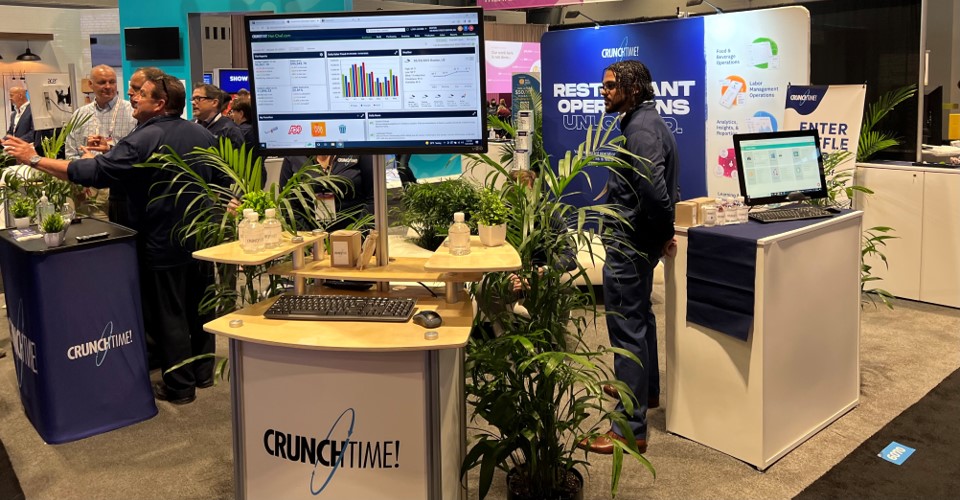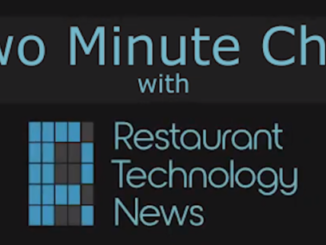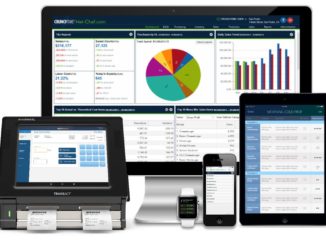
6.16.2022
Bill Bellissimo is the Founder and CEO of CrunchTime! Information Systems, a back-of-house restaurant operations platform focused on helping restaurant chains of all sizes make timely, fact-based decisions to reduce food costs, drive labor efficiencies and better manage the quality and consistency of their foodservice operations. Bill has firsthand experience as a restaurant operator. Prior to founding CrunchTime in 1995, he served as president of a large restaurant chain in the northeastern United States. In this interview, Bill explains how CrunchTime works with restaurant chains. He also shares his perspective on how technology, in general, is transforming the food service industry — and how it can help alleviate some of the biggest challenges restaurant owners and operators are facing today.

For starters, tell us a bit about your background and how you came to found CrunchTime.
My experience with the restaurant industry began at a very young age when I worked in the restaurants that my family owned. I went to work on Wall Street after college, before gradually returning to the family business.
At this point, my goal was to simplify restaurant operations. I grew increasingly frustrated with the systems available at the time, which were often far too complicated and difficult to use. So I took matters into my own hands, investing heavily in technology to create something more user-friendly. I began to build the tools that I wish I had during the ten years I was running my own restaurants. And that’s when the initial idea for CrunchTime was born.
What does your experience working in restaurants bring to CrunchTime? Did it help you to better understand the pain points?
It was clear to me that the people who had designed those early systems had never worked a single day in a restaurant. They didn’t understand the complexity, pace, and skill set of the operators. I found it extremely frustrating to walk into one of my restaurants and find the manager in the back office reconciling invoices or entering in invoices, when the team out front desperately needed leadership.
The experience of having lived and breathed restaurants for over a decade allowed me to build a new system to make running a restaurant much easier.
What problems does the CrunchTime platform help solve?
CrunchTime was designed to simplify the day-to-day operations of a restaurant. There are many unpredictable factors in food service that can distract from its main objective of delivering great service and a great product. A delivery truck running late, running out of a critical ingredient, et cetera…. CrunchTime was developed specifically to handle these types of issues, which eliminates stress and creates a better working environment.
What does technology like CrunchTime offer various staff members?
Every staff member at a restaurant has a different role, different responsibilities, and is accountable for various aspects of the business. Within each role, different challenges may arise: supply chain issues, staffing shortages, forecasting issues, training that needs to be completed, etc.
What CrunchTime does is combine everything into a single, unified platform. And what we’ve worked hard to do is understand the end user. We keep it simple so that it can benefit every single person in a restaurant, regardless of the discipline.”
Restaurants coming out of the pandemic are dealing with staffing and supply chain issues. How can technology help address these issues?
Post-pandemic, everyone in the industry is expected to do more with less. What technology does is give the operator a system to handle the mundane tasks (sales forecasts, product orders, generating prep, etc.) so that their team can focus on producing great food, providing useful mentorship, and delivering an excellent guest experience.
How is automation and business intelligence revolutionizing the food service industry?
In addition to crunching massive amounts of data, automation provides access to data in real-time which helps observe and analyze customer behavioral patterns. The operator can use this data to course correct as necessary, to make sure that the information is relevant and actionable. I think that’s the great combination that our business intelligence provides: deep data analysis.
Can you share some examples of just how important data is and will be going forward?
CrunchTime now allows for processing check level detail in real time, so the operator knows what they’re selling, how much they’re selling, what the shelf life is, and how much product they have left. The platform also informs the operator of whether sales are consistent with forecasts and whether labor plans are in line with actual sales.
By providing real-time, actionable, connective data, CrunchTime creates a clear path for the operator to run a great restaurant.
With data come security risks top of mind for many people these days, how does CrunchTime ensure the platform is safe, secure and compliant?
Platform security has become very relevant in the past five years. At CrunchTime, we’ve always placed a very high value on the security and resilience of the platform. In the last two years, we’ve embarked down the path of getting a type two certification, which essentially means that we meet the highest standards of data security updates, platform resilience, and disaster recovery. These standards have to be consistent with the highest industry standards, and also have to be validated and verified by industry experts.




